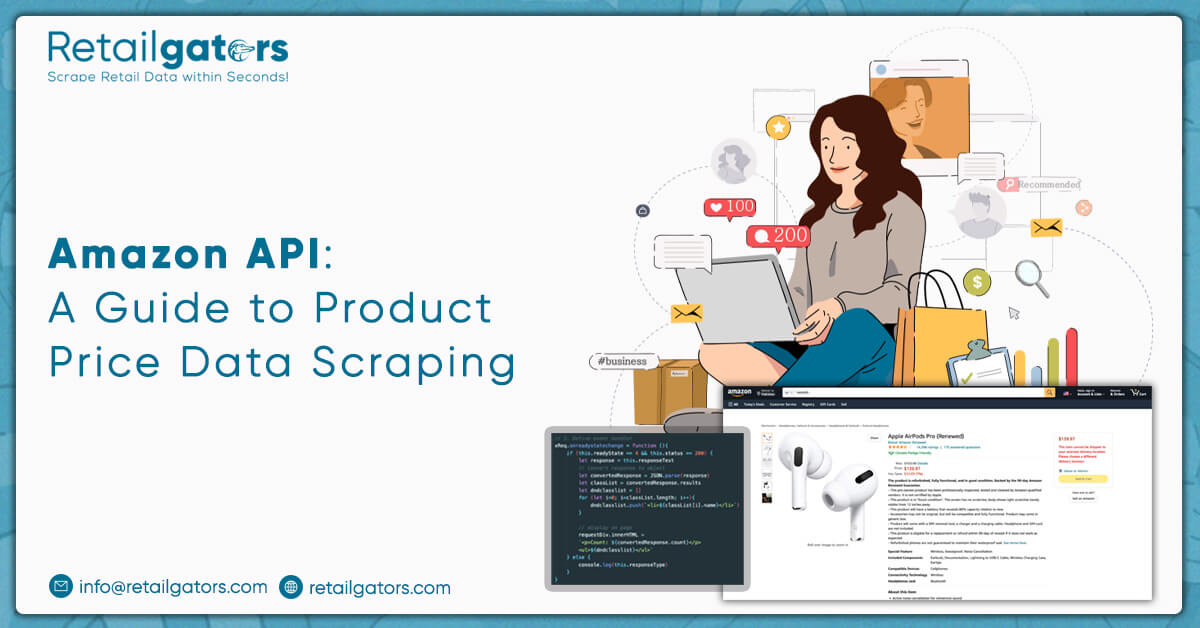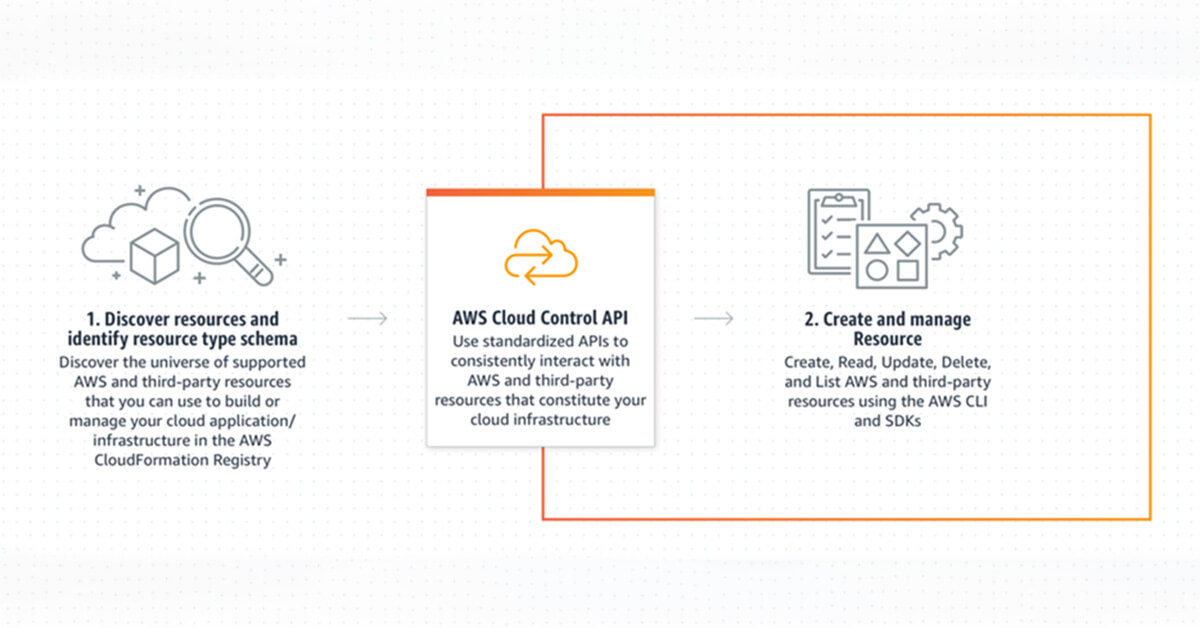
Amazon API is a regulated service that enables developers to define HTTP endpoints. It can involve REST APIs. It can even include WebSocket API. It connects the endpoints with the related backend. These helps handle authentication, tracking, and detecting API requests.
Several serverless applications utilize Amazon APIs which easily replace these API servers with a full-fledged serverless solution. Within any serverless system, the API gateway is a part that binds together API definitions and serverless functions.
The ability of API gateways to accelerate the execution of a serverless function as a direct response to any HTTP request makes these gateways essential. The best part about them is that they help promote a serverless framework for web applications.
While utilizing API Gateways along with various other AWS options, it becomes easier to construct a fully-developed customer-friendly web application. But in all this, one is not required to maintain any server themselves. The functionality possesses the boons of the serverless model. These include low maintenance, improved functions, and low cost.
In this blog, we will look at APIs, Amazon APIs, the benefits, and other intricacies more closely!
APIs- A Glimpse
API stands for Application Programming Interface. It is software that enables two software to communicate. They are a convenient way to scrape and share information in the organization. In other words, an API is a rule laid down which indicates how different software programs must interact. These APIs help a software program to reach out to the functionality of other programs.
Today, APIs play a crucial role in any business's revenue and have shaped the future of many firms with their presence.
What is Amazon API?

Amazon API Gateways refer to a fully developed service that aids in developing and creating, apart from maintaining, publishing, and securing APIs across different scales. These APIs act as the main entrance for applications to gather data and other functionality from the backend.
API Gateway controls the various functions required for accepting or processing concurrent API calls. It also involves a CORS support system, authorization, and access control apart from monitoring. The gateway does not include minimum fees. It is also devoid of startup price. Here, one pays for the calls of API and receives the information transferred. One can also reduce the price per their usage parameters and scales.
The use of Amazon API is to build HTTP APIs that are serverless. These gateways stay as one's API server that manages HTTP APIs. They also help connect every endpoint to the backend service. Apart from this, they also handle issues like authentication and traffic.
However, one should know that Amazon Gateway has a usage limit. Although most of these can get increased after contacting AWS assistance, a few limits cannot change. These include Regional APIs, Integration timeouts, and Payload size.
Amazon API Gateway Features
The following are the features of Amazon API Gateway that make it popular amongst businesses :
1. Stateful and stateless APIs get supported by the gateway.
2. It has a significant authentication protocol that involves AWS identity and Lambda authorizer. It also has Access Management Policies that can help businesses.
3. It offers a developer portal. Here, API developers are allowed to publish their APIs.
4. Amazon API provides execution logging for CloudWatch, including access login. It also offers alarm options.
5. It allows integration with various other AWS services like AWS Kinesis or AWS Lambda, which further adds to its feature.
Benefits of Using Amazon API Gateway
The benefits of Amazon API Gateways are as follows:-
Effective API Development
With Amazon API, the end-users can run numerous variants of the same API. With these, one can test and release new varieties quickly. One needs to pay for calls made to their respective APIs. There do not exist upfront commitments or minimum fees.
Effortless Monitoring
Amazon Gateway helps monitor performance information on API calls, information delay, and error rates. These help in visually tracking calls to the service with the aid of Amazon CloudWatch.
Adjustable Security Controls
Amazon provides authorized access to one's APIs through AWS Identity and Amazon Cognito. If the end-user utilizes OAuth tokens, Amazon API provides native OIDC support and OAuth. For the support of custom authorization needs, one can use Lambda authorizer with AWS Lambda.
Cost Saver
Amazon API Gateways offer a tiered model of pricing for API appeals. Even if API Requests cost goes extremely low at 0.90 dollars for every million requests concerning the highest tier, one can decrease the price as API usage increases.
Effective Performance
Another benefit of Amazon API is that it offers the end-user with the minimum delay when API requests get sent. It also quickens the responses with the help of its global network, which involves edge locations. These get performed by Amazon CloudFront.
It even helps reduce traffic and aid in authorizing API calls. All this ensures that all the backend tasks can face traffic fluctuations and spikes. It also makes sure that the backend systems do not get called unnecessarily.
Options with RESTful APIs
Amazon API helps end-users to formulate RESTful APIs with HTTP APIs. It can also get created using REST APIs. The ideal way to form APIs is through HTTP APIs that go well with maximum cases. They are also relatively cheaper than their counterpart, which is REST API. They are approximately 71% cheaper than the latter option. The use case of the end-user needs an API proxy function, including management features in one solution. Here, REST APIs can get used.
Ways to Scrape Price Data with Amazon API
Here is how one can scrape price information with Amazon API:-
1. One can utilize the Amazon Advertising API (AWS) for fetching information related to current prices. It is even possible to collect data about product descriptions, reviews, images, stock availability, and other relevant information from the e-commerce website.
2. Start with getting the Amazon Price method. It will collect the region. It will also take the 10-digit ASIN of the goods chosen.
3. You will receive the response as JSON. It can get parsed with a price tracker through Google scripts.
4. At this stage, you must have the private and public access keys. These come from the AWS Management Console. Now, you must replace these in PHP (Hypertext Preprocessor) snippets.
5. One must also put their Amazon Affiliate ID for the particular country's Amazon Affiliate Program.
6. Finally, you can extract relevant price information from the website per your needs.
Final Thoughts
A fully-managed option, Amazon API has made the tasks of developers easy. It has helped in creating, publishing, maintaining, monitoring, and even securing APIs. From building serverless applications or generating a proxy for HTTP, all get facilitated by Amazon API.
Today, businesses invariably use Amazon API for enhanced functionality and to increase their worth in the market. By using the service properly, one can make informed decisions and have better insights into the market scenario for better reach and outcome.








Leave a Reply
Your email address will not be published. Required fields are marked